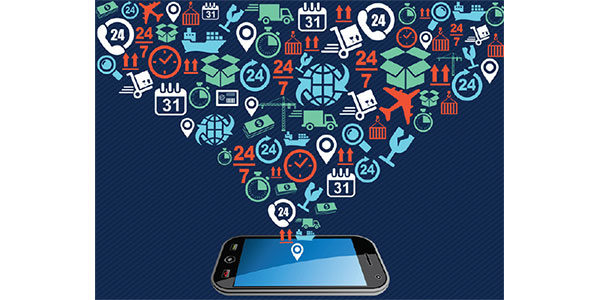Could smartphones revolutionize logistics?

Smartphones and tablet computers have become ubiquitous, and although questions about their suitability for rugged applications remain, research conducted by DHL suggests that there is a legitimate place for consumer electronics in logistics.
"The success of smartphones and tablet PCs has created a situation in which employees have better technology for personal use than they do for business needs," said Dr. Markus Kückelhaus, director of trend research at DHL Customer Solutions & Innovation. "But they expect to have the same standard of technology at work. For this reason, we think companies have to step up and put smartphone sensors in particular to work in logistics."
In the report "Low-Cost Sensor Technology," the DHL researchers explain how some technologies developed for consumer applications, such as Microsoft's video-game camera Kinect, smart watches, and near-field communications, can be incorporated into logistics applications. This is revolutionary, researchers say, because in the past, new technologies were initially applied in business and only later migrated to private uses.
Tablet PCs and smartphones contain sensors that can measure acceleration, position, or light, the researchers noted. In logistics, these capabilities can be used to record shipments' arrival at parcel centers, pinpointing the shipments' locations and updating their status on an online platform, they said.
But that's not all they can do. DHL says it has successfully tested two methods of measuring pallet volume that were based on sensor systems found in Microsoft's Kinect. In tests, this depth-sensing technology took measurements 50 percent faster than previous technology. Other potential uses include fill-level measurements for containers and trucks as well as the documentation of freight damage.
Related Articles
Copyright ©2024. All Rights ReservedDesign, CMS, Hosting & Web Development :: ePublishing